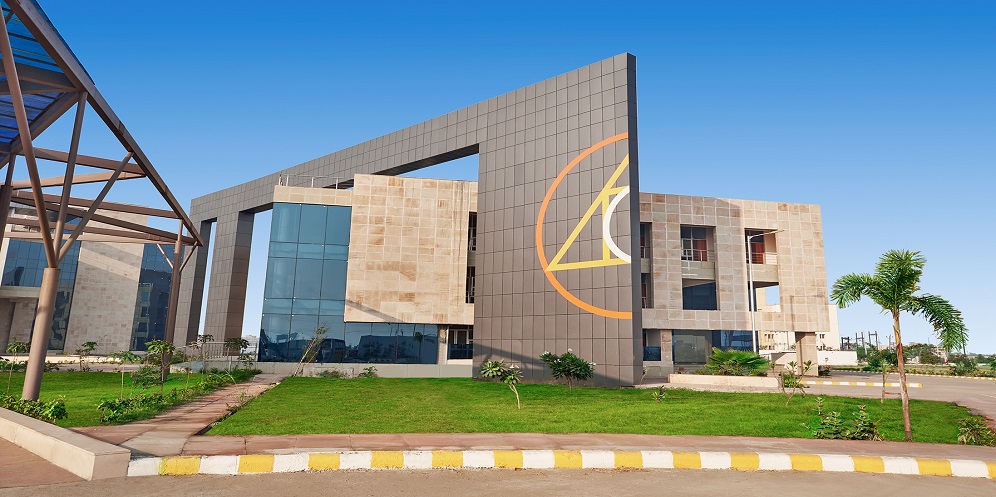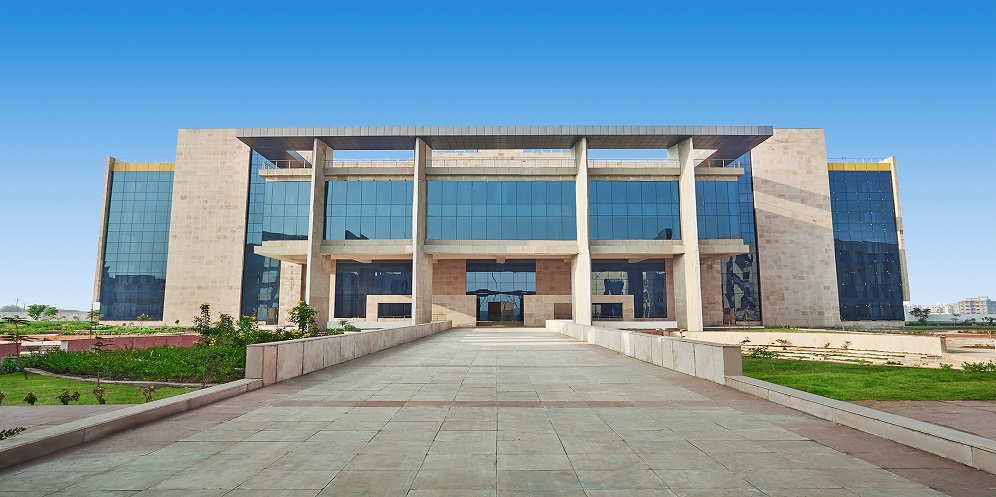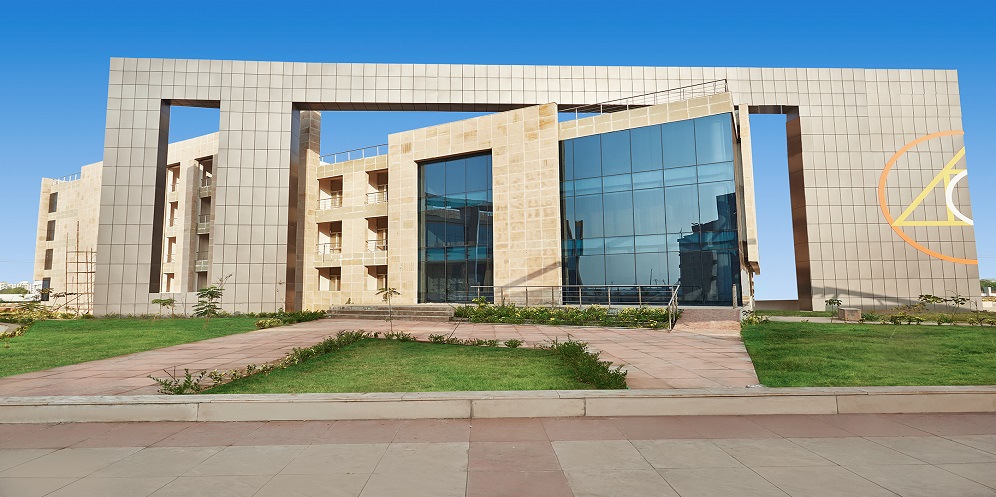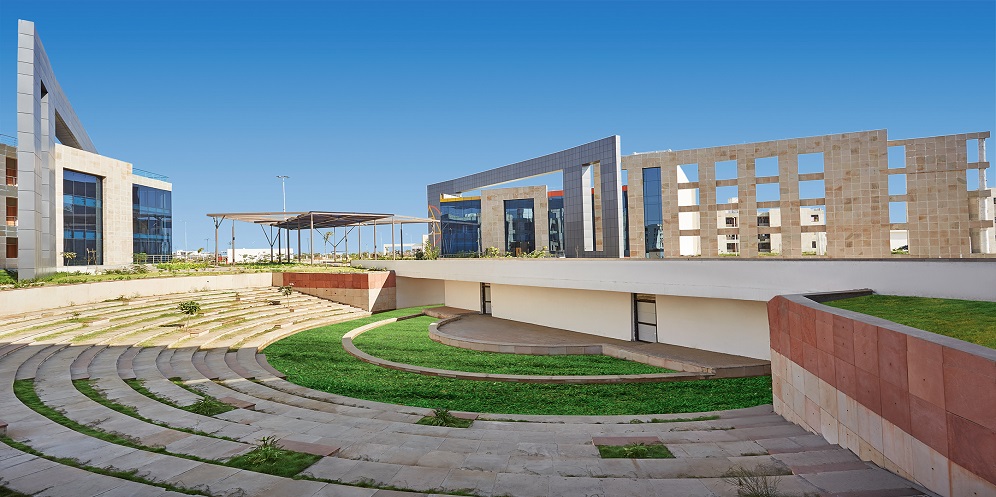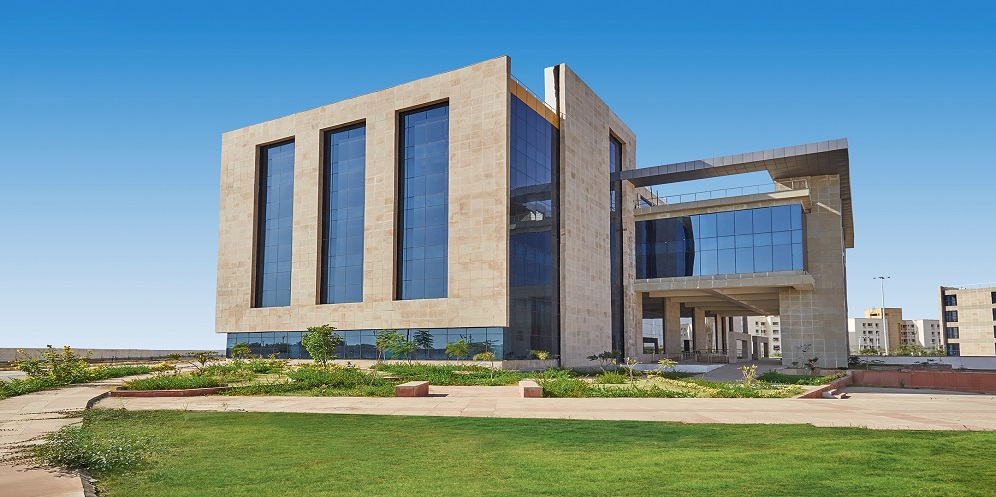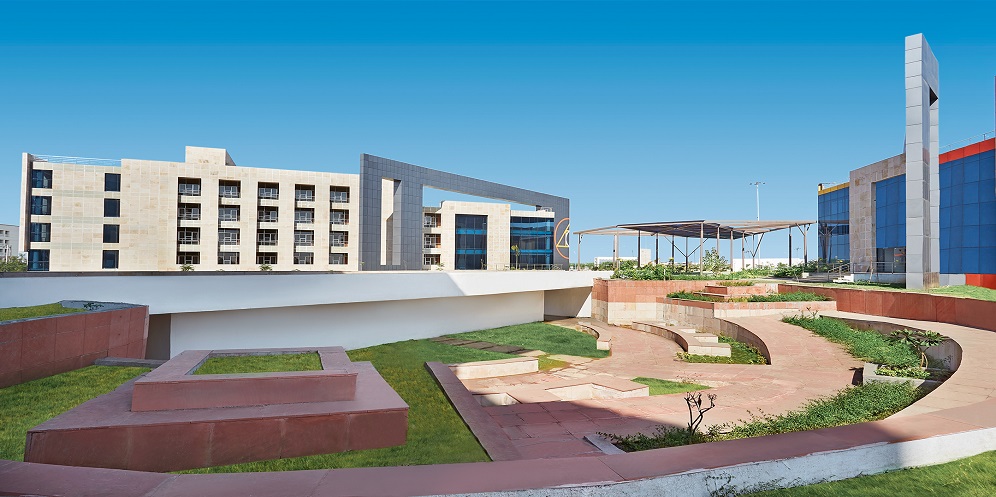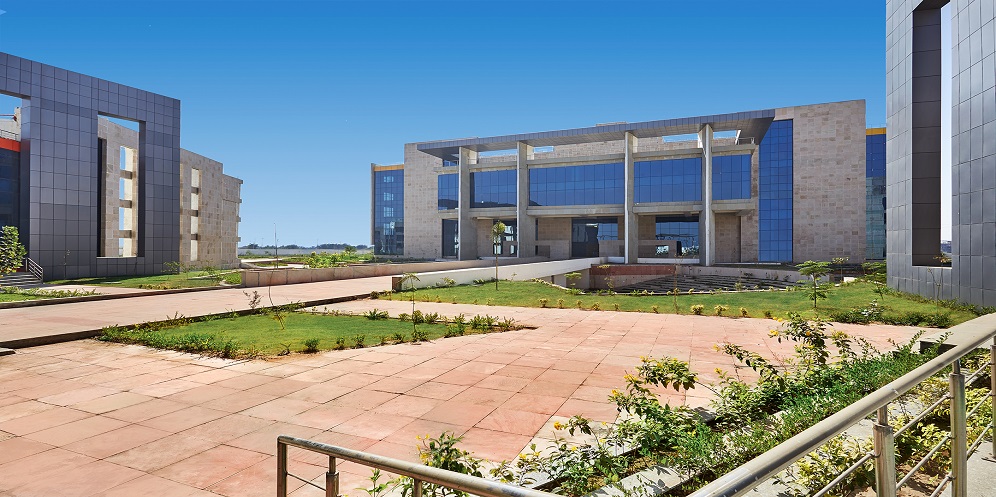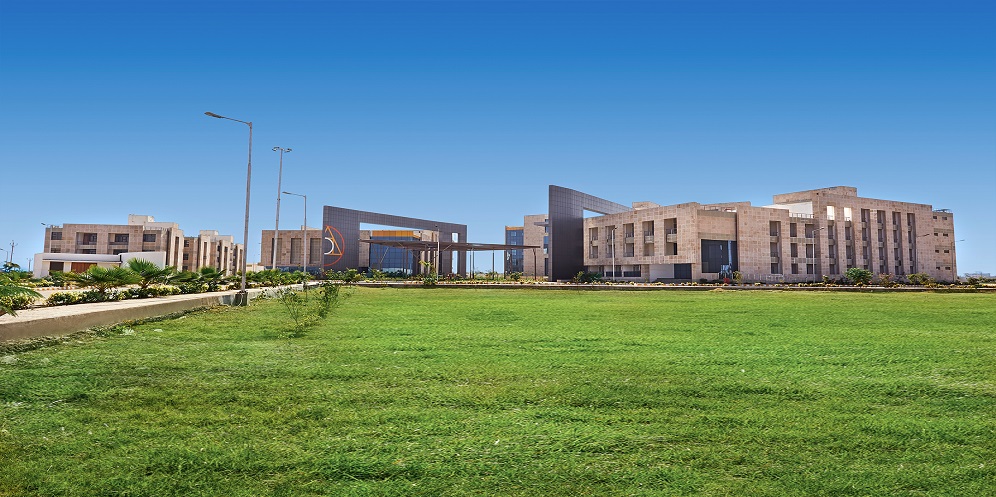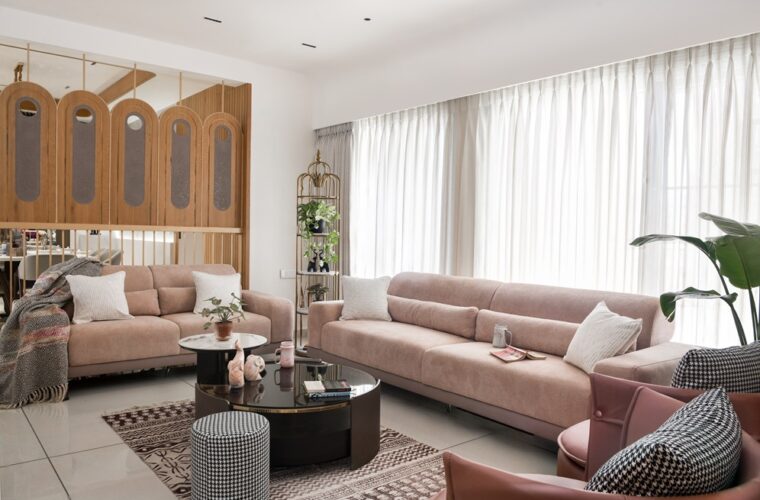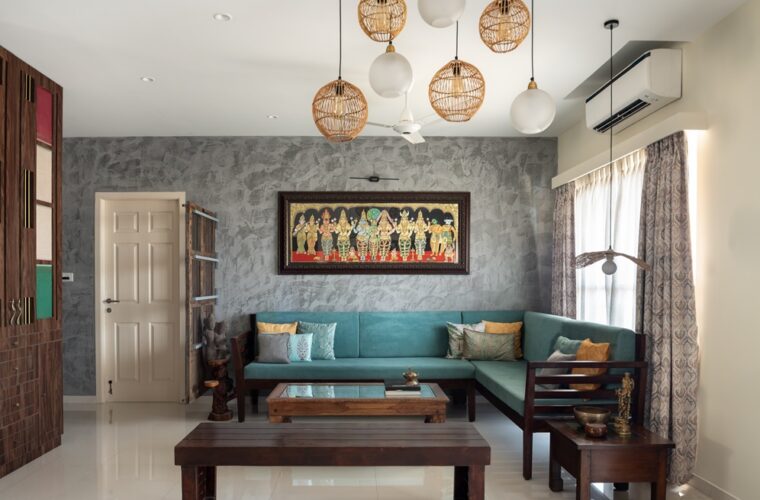Alchemy inspires Gujarat institute
photos: Yatinder Kumar
Ankleshwar being a ‘chemical town’ inspired Vyom Architects’ concept for the Footwear Design and Development Institute (FDDI) in Ankleshwar, Gujarat. Spread over 10 acre, FDDI is an institutional campus commissioned by the Ministry of Commerce, Government of India.
Thus, the squared circle (a 17th century alchemical glyph) is predominant at the entrance to the institute. Representing the spiritual progress of humanity, the architectural intent is to create an environment of learning, experimentation and wisdom. This is manifested in the physical environment through spatial planning that would significantly enhance academic, social, and emotional learning opportunities while relieving stress. The design for the campus sought to synergise all the physical elements while exhibiting openness and varied spaces in order to enrich learning.
A sunken, central, landscaped courtyard is used to craft unique, interactive spaces to activate the campus, binding all the building spaces as they open into it, while maintaining a sense of definite building functions and programmatic viability. A bridge, passing through landscaped courtyard and overlooking the open-air theatre, connects the drop off area to the Main Block. These two areas together form the central circle of the alchemical symbol. The three primary blocks, i.e. The Main Block, The Boys’ Hostel and the combined Auditorium and Girls’ Hostel are placed along the sides of the symbol resulting in a central, interactive space that stays activated from early morning till late night. This becomes the “heart” of the campus, creating innumerable opportunities for interaction, both formal and casual.
The Main Block, placed axially along the primary approach, houses academic and administrative functions. The classrooms and lecture halls are planned according to seating configuration and capacity, along with computer labs, a library on the second floor and three workshops on the third. The planning is focussed on creating an efficient structure and circulation, while ensuring that daylight is available in all spaces of the building. The Boys’ Hostel is planned around a central courtyard, while the rooms are placed along the periphery to maximise ventilation and daylighting, while creating private spaces for the residents. Large, recessed windows and balconies ensure adequate light and ventilation. The Auditorium is sited to minimise public circulation within the core spaces of the campus- thereby completing the third side of the symbol. The staff accommodation is located towards the South East corner of the site, creating a quiet and private zone. The units are laid out to achieve optimal building orientation to reduce dependence on mechanical means. The residential zone is designed “within the landscape”, while ensuring easy connectivity to the rest of the campus.
The use of elevation frames, stone cladding and glass ensures optimum day lighting, while unifying the built volumes. It enhances the quality of internal space, while optimally designed fenestration patterns add to the unique character of the campus. A common façade language unifies all the site components, while exuding a unique character in the elevation. Striking bold elements have been used to define the building elevation in both, an aesthetic and functional essence. Robust elements such as the feature walls, cladded with ACP panels for added emphasis, frame the site edges and the entrance, enhancing the character of the facade.
A larger intent was to imbibe passive design features in the design, right from the inception stage. Through optimal building orientation and recessed fenestration with deep balconies in residential spaces – hostels and apartments, the ingress into the built mass has been controlled. Cladding of Gwalior stone and red sandstone, and the elevational frames further reduce the heat ingress. Integrated landscape design with the use of local trees and efficient site planning with minimum road area and sunken courtyard spaces help to create a favourable micro climate. Naturally ventilated circulation spaces are crafted within the buildings, leaving minimal room for artificial means of heating and cooling and enabling a judicious use of air-cooled systems in the workshops. A high performance DGU and an STP have been installed for recycling of water for irrigation and flushing. Wherever possible, it has been ensured that there has been minimal disturbance to the existing site topography.




